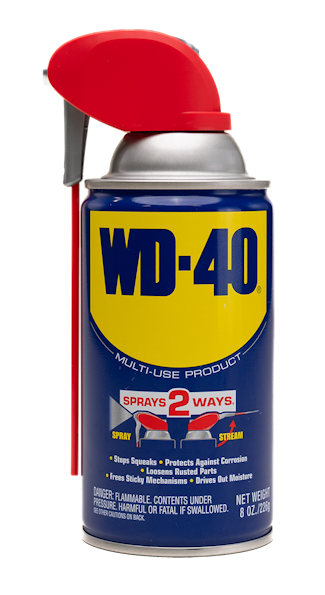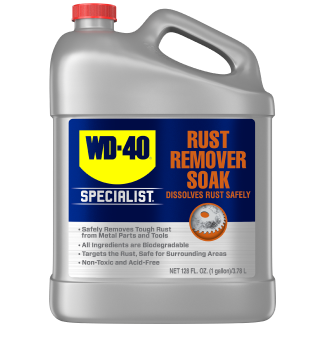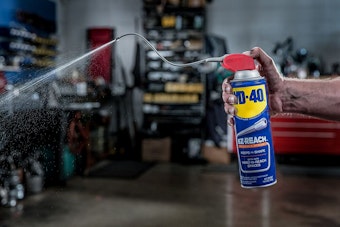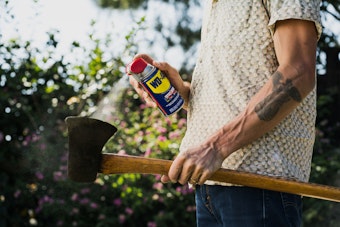Welding Basics
Welding Basics
<< BackFor people unaccustomed to working with metal, learning to weld can be dauting. High heat, electricity, blinding light, flying bits of small metal, and other challenges await those who wish to attempt the craft, and becoming an expert welder requires a great deal of time and experience. That said, learning to weld can also be an excellent opportunity to grow into a new skillset, meet a challenge head on, and expand the possibilities of what you can accomplish. You don’t need to be an expert welder or produce flawless & beautiful welds to be effective in many tasks and projects. Read below to discover different types of welding and see if this journey might spark your curiosity.
Getting Started
The four main types of welding are MIG, TIG, stick, and flux core. Each requires a machine powered by electricity and safety equipment such as a welding helmet for head, face, and eye protection. Home Depot offers an article for How to Choose the Best Welding Helmet when you’re ready to buy one. Before purchasing a welder, choose which style you’re interested in pursuing and perhaps test one out with a friend or in a welding class. This article is not meant for instruction on how to weld, but to supply information to learn about welding and where to begin. You can research further with many videos on YouTube or with other online resources such as The Crucible’s “Welding 101: The Comprehensive Online Guide.” Continue below to read about the four main types of welding.
Stick welding – also known as shielded metal arc welding or rod welding, among other names – is one of the most recommended styles for beginners. It uses an electrode “stick” with a core metal, often steel, surrounded by a flux coating. Electrode holders from the welder cables are attached to the metal to be welded and the arc of electricity melts the rod core (protected by the flux) to join the materials. Stick welding is great for general purpose and structural welds.
Flux core welding is very similar to stick welding, except with the welding material has flux at the core and metal on the exterior. The welding material is wound in a roll and fed by a motor, rather than as a stick by hand. With this method, striking an arc is easier because the material is being fed automatically so you can maintain a constant distance from the surface. For some people, flux core welding is a great beginner’s choice because of the ease of the welding process and the relatively low cost for equipment.
MIG welding is fast, easy to run, and doesn’t leave a slag coating because it doesn’t use flux. A roll of wire is fed automatically, similar to flux welding but now with only a metal – for instance, a steel wire coated with a protective outer layer of copper. As the wire is fed through the MIG welder, the gun has a nozzle that emits a shielding gas (carbon dioxide, argon, or a mix) which protects the weld pool as it solidifies. MIG welds come out much cleaner than stick or flux welds, but one potential drawback is the cost of the equipment and materials. Note: it is possible to use a flux core welder to start and then convert to MIG welding with the addition of a gas cylinder.
TIG welding, or gas tungsten arc welding, uses an arc created by an electrode made of tungsten that will not melt. A rod of metal filler material (type of metal varies) is applied manually to the arc point to pool molten metal at the desired location. TIG welding is the most precise of the welding types but also the most challenging to learn. It’s ideal for aluminum welds and requires a more expensive machine that uses DC as well as AC currents – although the cost in total is similar to TIG welders with the gas cylinders included.
Depending on your goals and intent when learning to weld, you may wish to stick to one type or experiment with several. At the end of the day, different jobs will be better suited to one or another type of machine or process. Multi-process machines exist that can accomplish different types of welds with one piece of equipment, although they have certain drawbacks and some challenges exist for particular tasks (such as with aluminum or when AC is needed).
Pro Tip: Before attempting to weld metal parts or components together, ensure the surfaces are clean and free of rust to create a good bond. Use WD-40® Multi-Use Product to free up rust and other grime from the metal, or for heavy rust on submersible parts use WD-40 Specialist® Rust Remover Soak.
FEATURED PRODUCTS
WANT TO GET MORE TIPS AND TRICKS?
SUBSCRIBE TO THE NEWSLETTER




